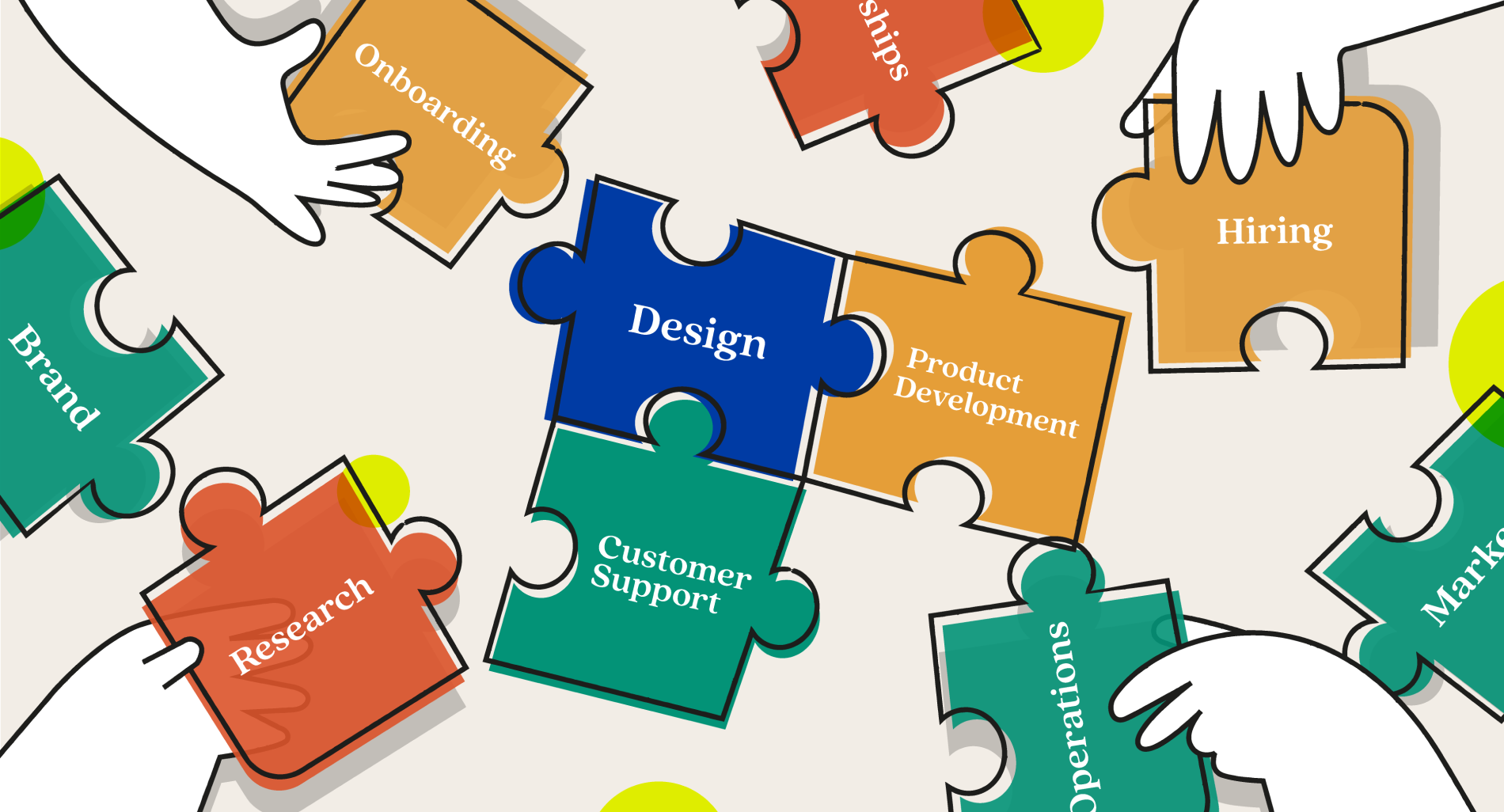Three short words haunt every founder’s dreams: product-market fit. Product-market fit means that a company has created a widget or service that a segment of consumers are willing, or even eager, to pay for because it solves a significant problem in their lives. If the founder is seeking investment, it’s even better if the company can demonstrate how it will scale – i.e., if enough people are willing to pay enough money for the company’s growth to be exponential.
Product-market fit may be a simple concept, but it can be incredibly difficult to achieve. Founders often start companies and build technology to address one of their own problems. They make an educated guess about what customers need based on their personal experiences. While this is a good starting place for designing and building, the team must validate the hypothesis to truly understand why and how customers use their products.
Additionally, the company needs to recruit the right members to the team. The company needs a balance of skill sets, backgrounds, and experience to design, build, test, market, and sell a product and keep the operational gears of the organization running smoothly.
So, what do building a product and building a team have in common? They are composed of many processes. Each process must be designed, and each can create learning and efficiency or cause a breakdown in development or culture.
Native uses human-centered design for every aspect of our business, from hiring to running meetings to building products. We use this design strategy because Native’s leadership team (Ben Lang, Camila Reyes, and Lukas Novak) has always been very close to design and uses these principles in every decision. What is human-centered design? Harvard Business School defines it as “a problem-solving technique that puts real people at the center of the development process, enabling you to create products and services that resonate and are tailored to your audience’s needs.” This article will share how we use human-centered design in our customer-facing and internal processes.
 Native’s founders – Lukas Novak, Ben Lang, and Cami Reyes
Native’s founders – Lukas Novak, Ben Lang, and Cami Reyes
Human-Centered Design in Product Development
Native uses design principles in every step of the product design, creation, and iteration process. In the design phase, we gather stakeholders from within the company to provide input on what our customers might want to see. These meetings include leadership, engineering, design, sales, and customer service team members. Native creates multilingual, secure, and real-time messaging tools, and our team has all joined the company because we understand the challenges that language barriers can pose in the workplace. We have teammates in nine countries and speak more than ten languages; some of us don’t speak English. So, we are the best team to understand and solve the challenge of language barriers in the workplace. The design team listens to the discussion about our potential customers’ goals and creates a first draft of what a product or feature might look like. Then, we all return to the table to critique and refine the design. Sometimes, this refining process takes several rounds.
When we have a prototype ready to present to the world, we kick off a research process with two goals: 1) to better understand customers’ pain points and 2) to gather feedback on our initial prototypes.
We use surveys for the first part of our research. Surveys help us identify our target market by answering the questions: Who is facing the problem we are solving? What group has the highest pain point? Who is likely to use technology to address the issue? And what kinds of technology are they already using? We can gain some insights into the most commonly used communications tools in different industries and parts of the world.
Talking face-to-face with potential customers through interviews is the second way we conduct research. If surveys answer the question “What?” interviews answer “Why?” and “How?” We use interviews to answer the following questions: What do customers like about communications tools, and what frustrates them? What challenges do they face communicating with teammates and customers? What would make them more efficient and effective? And we also show them our prototypes. Interviews are a big “aha” moment for us because this is when we find out if our hypotheses are correct or need adjustment. Are our tools intuitive? What are customers thinking about as they navigate through a new product? What features would improve their experience?

After we document our research, the team meets again to iterate on prototypes, and then we start to build the actual product. But research doesn’t end there; we also conduct research while we develop and improve our product. And we continue this practice throughout the entire product lifecycle. Engagement with our customers is the best way to ensure we build products and stack them with features that our customers need.
Human-Centered Design for Teams and Operations
Most people think that human-centered design was created specifically for the customer:
-
How to build products that speak to them.
-
How to interact with customers in a way that enables their success.
-
How we keep retention high.
But what about our “internal customers,” the team members building, testing, and selling our products? Employees are a company’s most valuable asset because their knowledge and productivity are essential to running a successful business. According to Mehdi Dadkhah, “All intangible assets such as patents, copyrights, intellectual property, brands, trademarks, and R&D are created by people. Therefore, people matter most to you and your business.”
We agree with this assessment! At Native, we are just as intentional about designing our internal processes and building relationships inside the company as we are about designing products.
An employee’s experience with a company starts with their application. We have a systematic process for our job applicants: we post a clear job description and ask candidates to submit their resumes. Those with applicable experience are then invited for an interview with the hiring manager. If that conversation goes well, the candidate has a week to complete an exercise or share a portfolio of work, depending on the role they are applying for. Final candidates meet with our leadership team. We follow up with candidates promptly at every stage of the process, such as acknowledging receiving their materials, informing them that we won’t be moving forward, or making an offer of employment.
Because of the clarity and timeliness of this process, we have received positive feedback from numerous candidates, whether they were hired or not. Here is one example:
“First, I wanted to thank you for your time and say that I am fascinated with the idea that you have. Surely it will be very successful. Also, you made the interview easy with smiles and a good time, since it is stressful for the candidate to introduce themselves and have a fluid conversation.” – Developer candidate
Internal processes are all interconnected: soliciting job applicants leads to interviews, and interviews lead to hiring and onboarding. We have structured our onboarding process to include:
-
A welcome message from leadership at the start of the employee’s first day. This note sets the tone that leadership is accessible and open to answering questions.
-
An onboarding document that explains the basics of the company:
-
A list of current team members and their contact information so new employees know how to get in touch.
-
Explanations of all the company’s terms and products so there is no confusion over terminology.
-
Links to important documents, like the company’s brand book, policies, and one-on-one meeting notes
-
A list of IT and tools the employee has access to. We also ask how knowledgeable the person is about each tool so we can provide in-depth onboarding when needed. Accounts are set up in advance so the employee can get to work immediately.
-
Information on how we communicate internally. This is a big one! We are entirely remote and spread around the globe. We cannot succeed if we don’t know how and when to collaborate.
-
A list of other resources, such as videos on leadership and how to reduce the number of meetings we hold each week. This also sets the tone for our company culture.
-
We have not always gotten the onboarding process right. For example, a new team member was once locked out of his email account, and as a result, it took a whole day for him to access onboarding messages and programs that required email to sign in. But like any good design, our onboarding process has gone through iterations. We created an onboarding template we review and update each time we hire a new team member. We also have an onboarding checklist with each task required, the order in which it needs to be completed, and the person responsible so that we don’t miss any steps when we’re welcoming someone new. We want to make the best first impression – that we are attentive and professional and expect two-way communication.
We are just as detail-oriented and professional in our communications with customers. We aim for them to have a seamless experience when buying from Native. This experience must be carefully designed and orchestrated when part of the process is manual. We have created internal documentation about how products are built and how we onboard customers to ensure everyone on the team understands their role when working with customers.
We recently launched a product that functions well to solve the customer’s pain point, but the onboarding process is not entirely automated. We could have emailed each customer to ask for the account holder’s name, subscription type, and payment information, but each touchpoint creates more friction and makes it more likely that we will lose the customer.
So, we designed a workflow that automatically directs the customer to input each necessary bit of data into secure platforms and then alerts our team to activate the subscription immediately. Once the subscription is activated, our development team alerts the customer success team, who then reaches out to the customer to welcome them, provides helpful hints on getting started, and offers an in-person tutorial on how to get the most out of the product. We have drafted and redrafted the email the customer receives to answer the most common questions about the product. We also direct them to a Help Center that answers questions we have received about the product and includes visual examples of how the product works.
Working in a startup environment can feel chaotic: we are running as fast as possible to build products and grow revenues. We, like most startups, face a learning curve on most days. Yes, we have expertise in product development, finance, and operations, but we are also building brand-new technology that our customers have never used before. So, we are building a culture of learning and iterative improvement within our team. We make guesses, and sometimes we make mistakes. But we learn from each experience. When we feel unsure about how to approach a new project, we work together, asking for advice and feedback. Little by little, we learn and improve the next time we step through the same process. This iterative approach to building our company through human-centered design translates into better internal communications, company policies, products, and more satisfied customers.
***
If you want to find more about Native and what they are working with, make sure to check out their website!
Sources
https://online.hbs.edu/blog/post/what-is-human-centered-design/
https://www.linkedin.com/pulse/9-reasons-why-your-employees-companys-most-valuable-asset-dadkhah/




